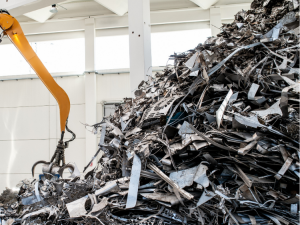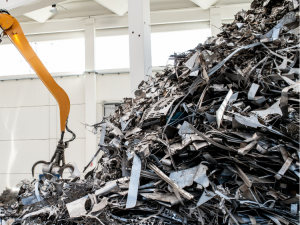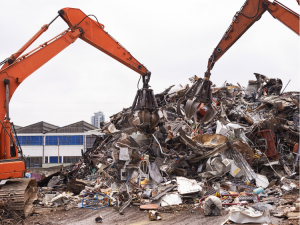
Miller on Scrap: More malaise, or will tariffs lead to higher prices?
If we review the price trends for the last two years, we can see this year’s pattern following a similar path.

If we review the price trends for the last two years, we can see this year’s pattern following a similar path.

The US scrap market has traded sideways from May prices in basically one day without any significant descent, sources say. All major steelmakers, with maybe one exception, issued orders at prices paid in May.

How have tariff revelations affected the June market?

The US mills have managed to reduce pig iron prices to correspond with the sharp declines in domestic scrap prices in May.

Ferrous scrap outlook for June appears on the upswing.

According to our latest analysis, prices for four of the seven steelmaking raw materials we track increased from April to May. However, select materials saw a collective 1% decline month over month and are down 4% compared to three months ago.

An update on the ferrous scrap market.

A look at the latest developments in the ferrous scrap export market.

The price spread between hot-rolled coil (HRC) and prime scrap narrowed again in May, according to SMU’s most recent pricing data.

Here are highlights of what’s happened and a few things to keep an eye on this upcoming week.

Domestic scrap prices tumbled across the board in May, but will June prove a bottom for the market?

SMU’s ferrous scrap market survey results are now available on our website to all premium members. After logging in at steelmarketupdate.com, visit the pricing and analysis tab and look under the “survey results” section for “ferrous scrap survey” results. Past flat-rolled survey results are also available under that selection. If you need help accessing the survey results, […]

The US ferrous scrap market for May shipment has basically settled, with the primes grades of #1 Busheling and bundles falling around $30 per gross ton (gt) from April levels. The obsolescent grades of HMS, shredded and plate and structural declined by $40/gt across several regions.

The US scrap market should start to form next week, and the outlook is for another drop in the delivered cost of material.

The domestic ferrous scrap market in the US is generally regarded as under downward pressure.

The ferrous scrap export market has been thinly traded thus far in April in the Atlantic Basin.

The constant flow of information we all receive can be a bit overwhelming, but SMU is here to help with a weekly snapshot.

The price spread between hot-rolled coil (HRC) and prime scrap narrowed in April after widening since January, according to SMU’s most recent pricing data.

US scrap prices declined in April for all the grades tracked by SMU amid tariff uncertainty, according to market sources.

Last week, much attention was focused on President Trump’s “Liberation Day” tariffs and rightly so. They have thrown a big wrench into the market-reading business. Whether you are for them or against them, the potential outcomes are hazy, at best. Maybe we should not forget the basics, tariffs concerns notwithstanding. The basics of this ferrous […]

Scrap buyers sound off on prices, demand, etc., in SMU's monthly scrap survey.

SMU’s ferrous scrap market survey results are now available on our website to all premium members. After logging in at steelmarketupdate.com, visit the pricing and analysis tab and look under the “survey results” section for “ferrous scrap survey” results. Past flat-rolled survey results are also available under that selection. If you need help accessing the survey results, […]

MetalX Founder and CEO Danny Rifkin - born in 1954 - died on April 1, surrounded by family.

US steel trade groups representing mills had a far more positive reaction to President Trump’s “Liberation Day” than the leading recycled metals association.

The price of pig iron for the US market remains firm despite a potential drop in domestic ferrous scrap prices going into April.

The US ferrous scrap market rise this year is showing signs of slowing down as US steelmakers adjust production in line with slower automotive production and sales. But President Trump's announcement of 25% auto tariffs could change things very fast.

The export situation from the US East Coast was interrupted last week after a political event in Turkey.

The US scrap market is in for another unpredictable ride going into April. Questionable scrap flows, extended winter weather, and implications of tariffs on steel and scrap continue to have an impact.

The HRC vs. prime scrap spread increased again in March.

Ferrous scrap prices rose across the board in March as the market adapted to short supply and the volatile tariff situation, sources told SMU.